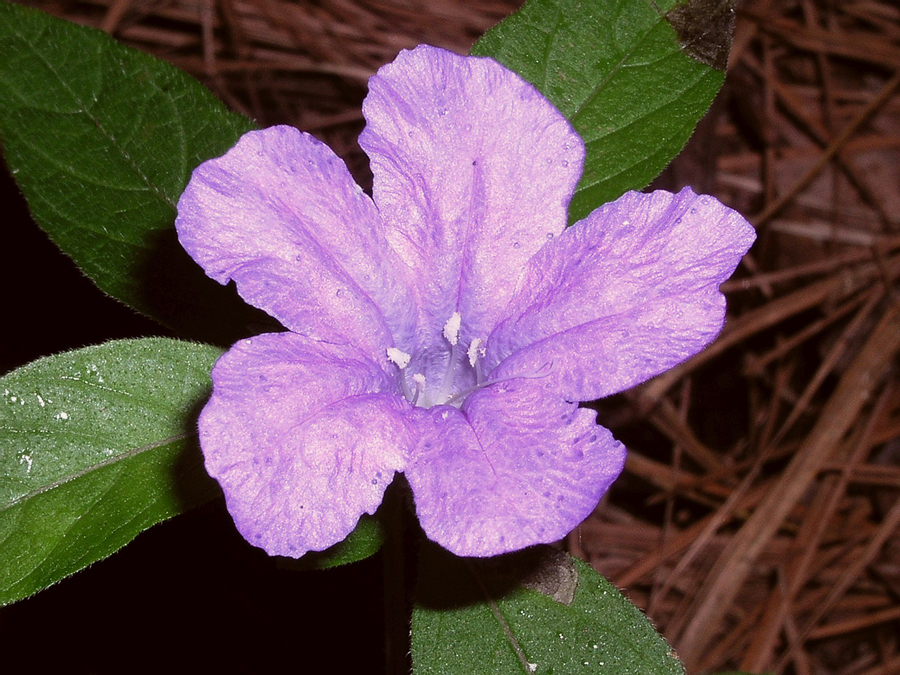Wild petunia
Pictured above: Wild petunia (Ruellia caroliniensis) by Jim Haley. Click on terms for botanical definitions. View post as a PDF.
Wild petunia (Ruellia caroliniensis) is a long-lived perennial wildflower found in moist to wet hammocks, flatwoods and sandhills, and along roadsides and in disturbed sites. It typically blooms in late spring through late summer/early fall. The lavender corollas attract a variety of bees including bumble, leafcutter and honey bees. Several butterfly species, including White peacock (Anartia jatrophae), Malachite (Siproeta stelenes) and Mangrove buckeye (Junonia genoveva), gather nectar from the flowers. The plant is a host for the Common buckeye (Junonia coenia).
Flowers are five-petaled, funnel-shaped and grows to about 2 inches in diameter. They may be purple, lavender or pale pinkish-white and are born in clusters along multibranched stems. Leaves are green, simple and ovate to elliptic with opposite arrangement. The leaves and stems are covered with fine hairs. Like other members of the Acanthaceae family, Wild petunia’s mature seed capsules will explode open, sending seeds far from the parent plant. The plant has many growth habits, from prostrate to erect with short or long internodes.
Although the common name is “petunia,” the flowers in the Ruellia genus are not true petunias, which are members of the Solanaceae (nightshade) family.
Family: Acanthaceae (Acanthus family)
Native range: Nearly throughout
To see where natural populations of Wild petunia have been vouchered, visit florida.plantatlas.usf.edu.
Hardiness: 8A-10B
Soil: Dry to moist, well-drained sandy soils; has been known to grow in wet, mucky soils
Exposure: Full sun to fairly dense shade
Growth habit: 6–18” tall
Propagation: Seed
Garden tips: Wild petunia is easy to grow and is incredibly adaptable to a variety of conditions. It is also a prolific self-seeder. It does well in a mixed wildflower bed of plants and grasses and also makes a lovely groundcover, particularly when mixed with other low-growing plants. Its showy flowers last only a day, but successful blooms keep the plant looking fresh. Establishing Wild petunia in shadier locations will result in plants that appear lanky with fewer blooms. In North Florida, it is not recommended for mass plantings as it will die back in the winter, leaving a patch of stems.
Caution: Although many garden centers offer some sterile nonnative Ruellia species, the widely grown Mexican petunia (Ruellia simplex, synonyms R. brittoniana and R. tweediana) should be avoided as it reproduces via underground rhizomes and does not respond well to herbicides. A Category I invasive exotic species, it has spread into municipal and natural areas, displacing native species and changing community structures or ecological functions. (See FloridaInvasiveSpecies.org for more information and to see a list of Category I and II species). You can help control the spread of this invasive species by not planting it in your landscape and instead planting the native Ruellia species.
Wild petunia is often available at nurseries that specialize in native plants. Visit PlantRealFlorida.org to find a native nursery on your area.

